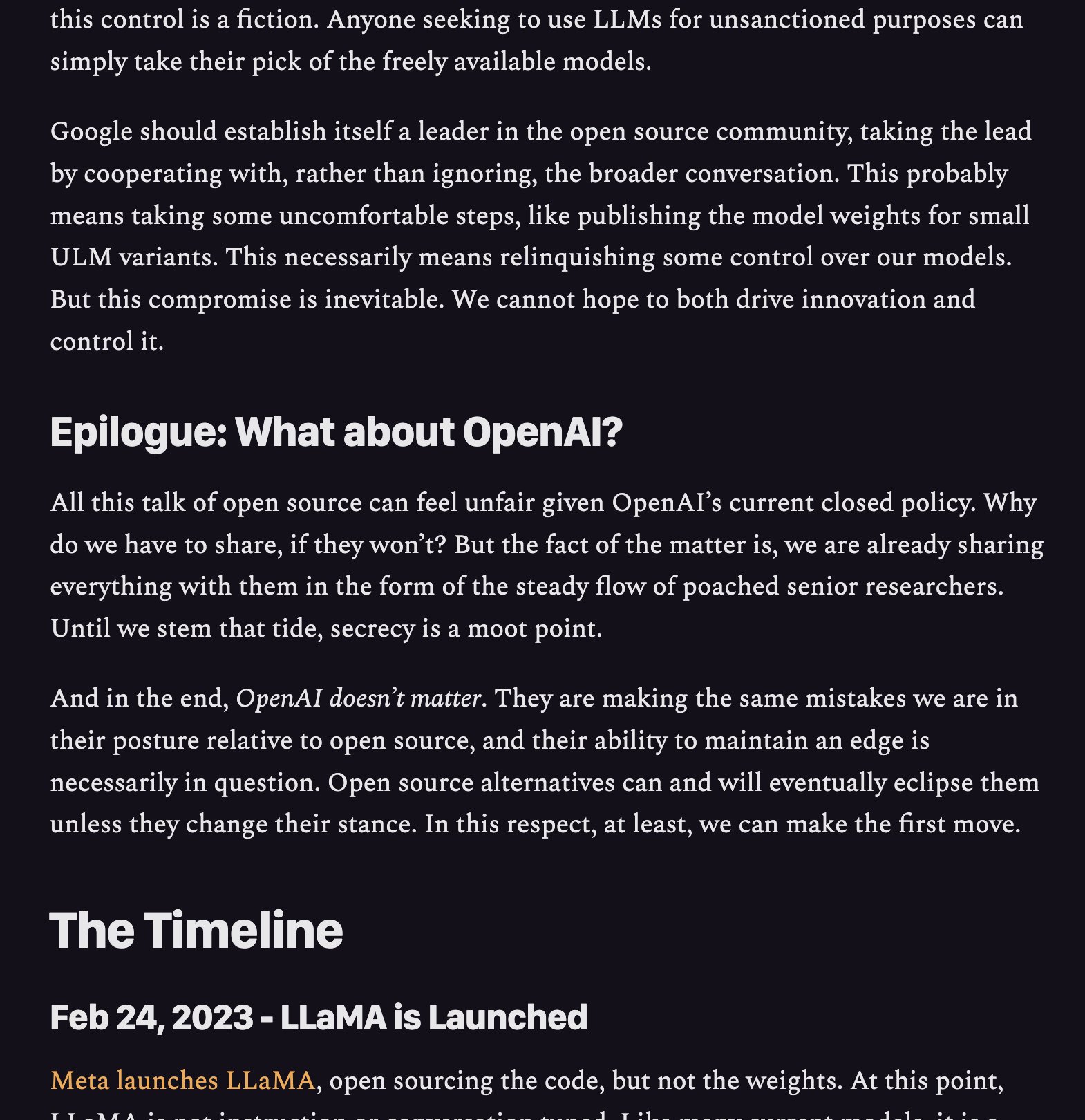Thread
This leaked google memo is a great overview of what open source AI has achieved... but the conclusion is wrong.
OSS enables permissionless innovation. This going to be the driving force that makes models small, fast and installed everywhere
...but the open source models will always be playing catchup for the best quality.
...but the open source models will always be playing catchup for the best quality.
Re-read gwern.net/scaling-hypothesis and the Chinchilla paper. The obvious point is that these models get better the more compute we throw at them.
Every small drop in training error "unlocks" new capabilities as it understands the world more.
**We're no where near the limits of scale yet**. There are many high value tasks (science, business...) where you would pay a *lot* for marginally better performance.
**We're no where near the limits of scale yet**. There are many high value tasks (science, business...) where you would pay a *lot* for marginally better performance.
Current training runs for the largest models cost 10s-100s of millions of dollars, excluding staffing costs.
It isn't long before we're talking billions of dollars per training run. And hundreds of millions on high quality datasets.
It isn't long before we're talking billions of dollars per training run. And hundreds of millions on high quality datasets.
In a few years time, there will be ~3 large enough players that can afford the compute needed to train them (think CapEx of a cloud infra company, only bigger).
Open-source/community efforts cannot keep pace, because they won't be able to raise the capital needed.
Open-source/community efforts cannot keep pace, because they won't be able to raise the capital needed.
The big AI labs will not open source their large models, nor will they reveal the tricks they've learned on their way.
This is crucial for them as a business. AI Safety and geopolitical concerns will further reinforce the need to restrict access.
This is crucial for them as a business. AI Safety and geopolitical concerns will further reinforce the need to restrict access.
It's not even clear they'll freely release an API to the model.
The idea that model distillation from samples will be possible is unlikely (and worth noting OpenAI's work on fingerprinting generations)
The idea that model distillation from samples will be possible is unlikely (and worth noting OpenAI's work on fingerprinting generations)
Innovations that occur in open source, however, will make it back to the big labs (if they weren't already using them – remember we don't know the true size of the deployed models, or how they managed to reduce costs so drastically). It is not a two way street.
The OSS community was gifted the leak of LLaMa weights. We shouldn't expect that to happen for larger models going forward. The most capable OSS models are at least a year behind right now, and I'd expect that to only increase.
The pace of innovation happening with the open source community is stunning. And I'm very excited for what it can mean for customisation, access and deployment. I even suspect that OSS models may be the bulk of AI usage (not everything needs full AGI power)
But, going forward, we should be more concerned with the big AI companies having an unassailable advantage rather having no moat.
We should be grateful that the leading labs have a capped profit structure.
We should be grateful that the leading labs have a capped profit structure.
